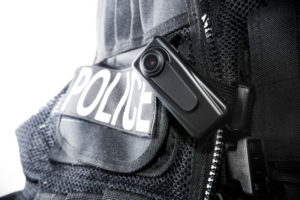Debunking 3 Common Myths About Police Body Cameras
 In 2012, there were an estimated 780,000 police officers in the United States. More and more officers are turning to cameras to provide additional evidence and information. However, there are still some common myths about this emerging technology. Here are some of them:
In 2012, there were an estimated 780,000 police officers in the United States. More and more officers are turning to cameras to provide additional evidence and information. However, there are still some common myths about this emerging technology. Here are some of them:
- Myth: Police body cameras always capture the whole story. This is obviously a myth. While body cameras do have the potential to capture an incident from a different angle and provide a new perspective, they simply can’t capture everything. They have the same limitations as other surveillance and other cameras. Additionally, if the wearer is constantly moving, the entire video could come out blurry and distorted. On top of that, the details captured are highly dependent on where the police officer is wearing the camera on their body — a head mounted camera will capture different footage than a chest or shoulder mounted body camera. The success rate of police body cameras varies on a case-by-case basis, and there are so many different factors that determine how clear or effective the footage will be.
- Police body camera footage can be publicly accessed because police are civil servants. This may seem true, but unfortunately, it’s not that simple. Even though public demand for police body cam footage is high, it’s a costly demand to fill. Prepping the footage for the public is an extremely tedious process — it takes about 17 hours just to prepare four minutes of footage because the privacy innocent bystanders, children, and victims must be protected. With these holdups, it’s just not feasible to make body cam footage available for public access.
- Police body cameras are always turned on and filming. In an ideal world, this would be true, but it’s simply not the case. In reality, police officers have a significant amount of discretion when it comes to choosing when their cameras are on or off. This has a huge impact on the footage that is captured and how effective it will be. While on patrol, there are plenty of opportunities for officers to fail to activate their cameras, whether it’s intentional or not. In fact, the Mesa, Arizona police department found that giving officers full control over when their cameras are rolling resulted in a 42% decrease in total video files generated monthly. The point remains that if the public wants a visual record of all police interactions from start to finish, municipalities must mandate it.
